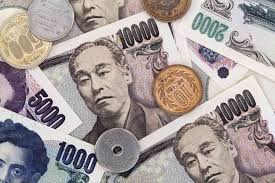The greenback recorded a modest 0.03 per cent increase against the yen, reaching 151.87 yen.
NEW DELHI: The dollar showed cautious trading on Tuesday, failing to gain significant momentum from an uptick in US Treasury yields.
Despite this, the Japanese yen faced continued pressure, hovering near multi-decade lows and prompting market watchers to stay vigilant for potential intervention signals.
The greenback recorded a modest 0.03 per cent increase against the yen, reaching 151.87 yen.
This level is close to the 34-year high of 151.975 yen achieved last month.
Japanese officials have intensified their verbal interventions in attempts to shield the currency.
Finance Minister Shunichi Suzuki said that Tokyo was readiness to counter the yen's recent steep declines.
"Authorities won't rule out any options in dealing with excessive yen moves,” he said.
The persistent threat of Tokyo's intervention has prevented the dollar from surpassing the crucial 152 yen mark, even as US Treasury yields—which typically correlate closely with the dollar/yen pair—rise.
Ryota Abe, an economist at SMBC, anticipates the dollar/yen pair to remain within a narrow range of 151.0-152.5.
He also foresees potential Japanese intervention in the currency market to "curb volatilities" should there be a rapid escalation in the dollar/yen pair.
In the wider currency market scenario, the New Zealand dollar saw a 0.15 percent uptick, reaching $0.6041.
This comes despite a recent survey by a private think tank indicating weakened business confidence in New Zealand for the first quarter due to various challenges faced by businesses.
Meanwhile, the sterling edged up 0.04 percent to $1.2658, and the euro stabilised at $1.0860, near a two-week high.
Although the US Treasury yields have increased, the dollar's performance remains dull.
This discrepancy arises as traders recalibrate their expectations regarding the Federal Reserve's potential rate cuts later this year.
The greenback struggled near a two-week low at 104.13 against a basket of currencies.
Notably, the two-year Treasury yield climbed to an over four-month high of 4.8010 percent on Tuesday, while the 10-year yield held firm near a similar peak at 4.4278 percent.
Ray Attrill, head of FX strategy at National Australia Bank (NAB), commented on the disconnect between rising US Treasury yields and the dollar's subdued response.
He said, "It's been a few days now, where we're seeing an increasing disconnect between what's happening in US Treasuries...but the dollar is failing to respond to that."
Attrill highlighted global factors contributing to this phenomenon, mentioning "increasing signs of improvement in the rest of the world outside the United States" and a "global reflation trade" driven by strength in commodity prices.
In other currency movements, the Australian dollar declined by 0.01 percent to $0.6604, while the offshore Chinese yuan was at 7.2437 per dollar.
Although the yuan has stabilised this week due to favourable Chinese economic data, it remains close to a 4-1/2 month low of 7.2364 reached on April 3.
The currency has depreciated by 1.8 percent this year despite the central bank's efforts to stabilise it.


